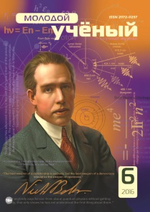Статья посвящена доказательству пользы использования доски для обучения английскому языку. В статье представлены объяснения технических методов при помощи разных примеров.
Ключевые слова: предметы обучения, доски, технический, нетехнический.
Different teaching aids are useful for learners in foreign language teaching. To teach a foreign language effectively the teacher needs teaching aids and experience of using them. By the teaching aids we mean various devices which can help the foreign language teacher in presenting linguistic materials to his pupils and fixing it in their memory. Teaching with various equipment gives us different advantages. Blackboards, pictures, charts, flash cards, maps, clocks, calendars, cartoons, advertisements, opaque projector displays, slides, filmstrips, phonograph recorders, tapes, films.
Teaching aids which are at teacher’s disposal are divided into:
Technical
Non-technical.
Teaching aids available to teachers on English as a Foreign Language may range from the board and some chalk to sophisticated computer devices. Materials are an essential component in teaching. Teachers and students recognize the importance of using «aids» for they make the teaching process easier as they may be used to explain, exemplify or practice the content presented to students. Materials promote the integration of language skills addressing language and content in a wholistic way.
In this article we are going to elicit the different techniques and advantages of using boards even though it is considered as a traditional teaching aids. When issuing timetables and books at the beginning of course, perhaps we should issue chalk or board markers to our students, too? Enthusiasts for the new boards are apparently excited that they can invite a student to the front and hand over the pen, but at a traditional board, depending on its size, you can have any number of learners working at once. We are going to look throw various technique of using boards during class:
Collecting names.Mark off a column on either side of the board and get one student to write the names of half their classmates in one column and another student to write the rest of the names in the other. This is good for practicing basic questions (What’s your name? How do you spell it?) and the pronunciation of letters and for working out instructions as well as for learning names. It works best with minimal teacher involvement.
Student — student dictation. Get some students to write two or three sentences each (all different) on the board, dictated simultaneously by their classmates. If they have just done an exercise involving ten sentences (for example) divide the board into three and get three students to write up sentences 1–3, 4–6 and 7–9. Whoever finishes their batch first can do number 10. This is good for listening and useful for getting answers up on the board in order to check homework or classwork.
Deductions from pictures.Give each student a word to read in secret and to draw a picture of on the board, within a strict ten — second time limit. When everyone has drawn and signed their name by their picture, put the students into pairs and get them to discuss what they think the pictures represent, using adverbs or modal verbs (Maybe Ali’s picture is a house. No it must be a car — It’s got wheels. Could it be a bus?).
Listening race. Write words or phrases on the board and give different colored markers / chalk to several students, who race to circle the words as they hear them (in a song or in a recorded conversation, for example) Who ever circles the most is the winner.
Up to the learners. If you have a mid — lesson break, or the students are still in the classroom after the end of the lesson, hand everyone some chalk or a board marker before you go. You never know what you might find on your return, but you may well find something on the board worth seeing, reading or knowing or something to learn or teach from. That’s why simple board is very important aid for teaching.
As a conclusion we can say that the effectiveness of the language classes up to the different techniques of using different teaching aids. Using blackboards while teaching foreign language is a suitable approach for different learners in target language as well as using modern teaching aids.
References:
- World Education Encyclopedia.
- English teaching professional.
- Macmillan. English dictionary for advanced learners. Second edition.







